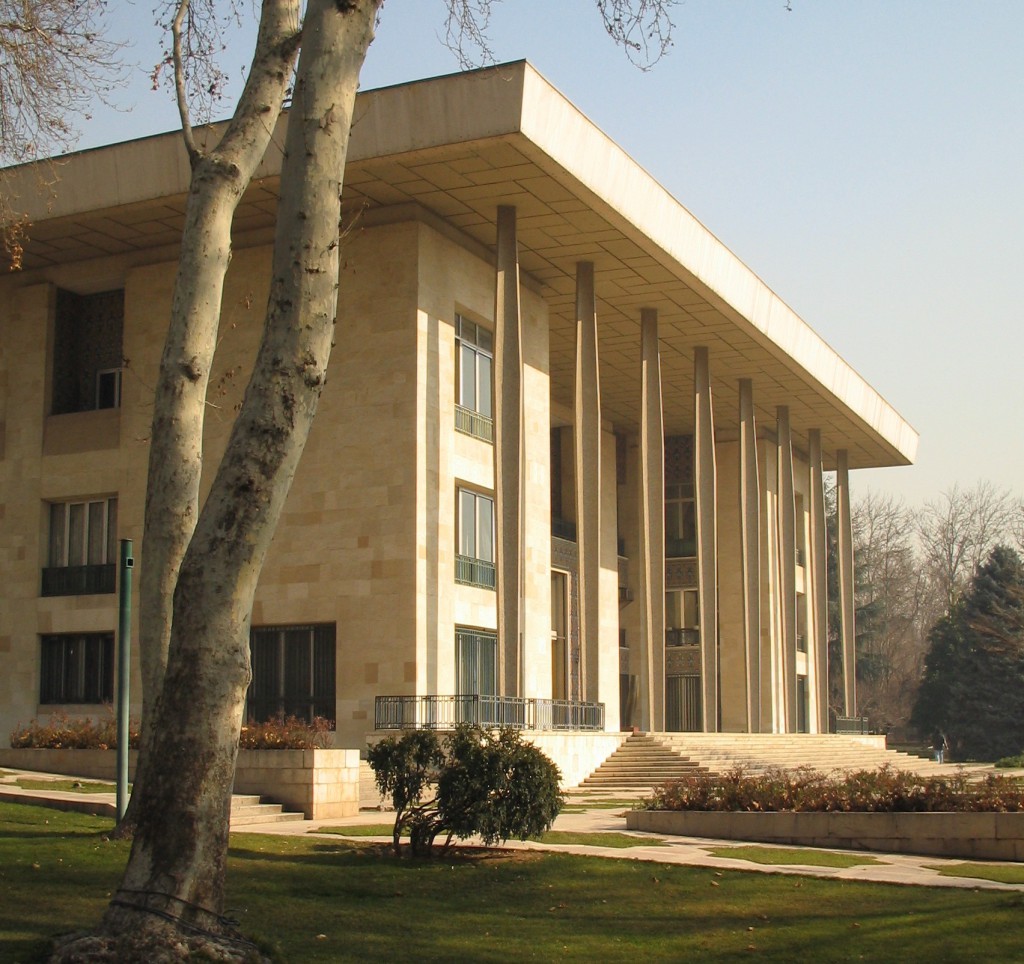Niavaran Palace Complex is situated in the northern part of Tehran, Iran in 9000 square meters area. It consists of several buildings and a museum. The Sahebqaraniyeh Palace from the time of Nasir al-Din Shah of Qajar dynasty is also inside this complex. The main Niavaran Palace, completed in 1968, was the primary residence of the last Shah, Mohammad Reza Pahlavi and the Imperial family until the Iranian Revolution. The main palace was designed in 1337 AH (1958) by the Iranian architect Mohsen Foroughi, and following a short delay in its construction, it was completed in 1346 AH (1967) and used in 1347 AH (1968).
Presently, it is comprised of five museums (Niavaran Palace Museum, Ahmad Shahi Pavilion, Sahebqaraniyeh Palace, Jahan Nama museum and the private library), and other cultural, historical and natural attractions including the Blue Hall, Private Cinema, Jahan Nama Gallery, and Niavaran Garden.
The Niavarān Palace Complex traces its origin to a garden in Niavaran, Tehran, that was used by Nasir al-Din Shah as a summer residence. The palace erected by Nasir al-Din Shah in this garden was originally referred to as The Niavarān Palace and was later renamed The Sahebqaraniyeh Palace. During the reign of Mohammad Reza Pahlavi all the peripheral buildings of The Sahebqraniyeh Palace, with the exception of The Ahmad-Shahi Pavilion (or Kushk-e Ahmad-Shahi), were demolished and the buildings and the structures of the present-day Niavarān Palace Complex were built to the north of The Sahebqaraniyeh Palace. In this period, The Ahmad-Shahi Pavilion served as an exhibition area of the presents of the world leaders to Iran.
The quadrilateral design of the palace and its interior archeological designing is inspired by Iranian archeology while making use of modern technology. Its decorations have also been inspired by the pre and post Islamic art. The gypsum work has been carried out by Master Abdollahi, the mirror work by Master Ali Asghar, the tile work of the outer part by master Ibrahim Kazempour and Ilia. The building floor is covered by black stone and has an aluminum sliding roof. The internal decoration and furniture of the palace have been designed and implemented by a French group. In the ground floor of this building there is a great hall in which all the rooms are situated, including a private cinema, dining room, guest room, waiting room and lateral halls as well as the Blue Hall.
In the half floor of this building, the office, conference room, Farah Diba’s secretary’s room, Leila’s bedroom and her retainer’s room. In the stairways there is a room where Mohammad-Reza’s military uniforms and official suits and his medals are kept.
In the third floor, Pahlavi’s resting place and his children’s and their retainer’s rooms are situated. These places are all decorated with precious paintings, carpets and gifts received from different countries.
Niavaran Complex
December 14, 2021
0 comment

Comment (0)